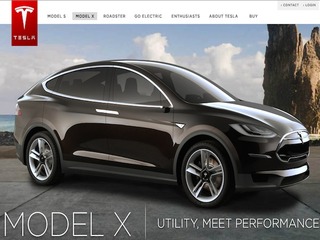How does Course Hero make money?
The company offers a freemium model, where users can pay to access more content and ask questions
Read more...Editor's note: Our Splash Health, Wellness and Wearables event is coming up on March 23 in San Francisco. We'll have Mario Schlosser, Founder & CEO of Oscar Health, Brian Singerman (Partner, Founders Fund), Steve Jurvetson (Draper Fisher Jurvetson), J. Craig Venter (Human Longevity), Lynne Chou (Partner, Kleiner Perkins), Michael Dixon (Sequoia Capital), Patrick Chung (Xfund), Check out the full lineup and register for tickets before they jump! If you’re a healthcare startup and you’re interested in being part of our competition, learn more and register here.
Also, vote for your favorite healthcare startup before February 16! Vote here!
For a long time the electric car seemed like a pipe dream, something that we would keep waiting for but would never actually come. That has changed in the last few years, partially thanks to the great recession, which led manufacturers away from gas guzzling SUVs and toward vehicles that promised to save people money.
Tesla, which was founded in 2004, was in the perfect place to advantage of that shift, and it has now managed to become what is likely the best known electric car company in the world.
Not surprisingly, Tesla makes the vast majority of its money from sales of new cars. It currently has two models that it are on the market, and one vehicle that will be available soon:



As of December 2016, Tesla Motors has sold over 186,000 electric cars worldwide. The company delivered approximately 22,200 vehicles in Q4, of which 12,700 were Model S and 9,500 were Model X. When added to the rest of the year, total 2016 deliveries were approximately 76,230.
In the first three quarters of 2016, the latest earnings that Tesla has released, it made $4.3 billion from its automotive revenue; $3.8 billion was from sales, while the other $507 million came from leases. In all, its new cars represented 92 percent of its revenue for the quarter.
In its earning releases, Tesla files everything not related to new car sales or leases under "Services and other." This consists of repair and maintenance services, service plans and merchandise, sales of pre-owned Tesla vehicles, sales of electric vehicle powertrain components and systems to other manufacturers, Tesla Energy products, and net sales of non-Tesla vehicle trade-ins.
Perhaps the most important of these other revenue sources is Tesla Energy, which consists of the company's battery charging equipment. The Powerwall 2, which it says "can power an average two-bedroom home for a full day," costs $7,000 with installation.
This division also include Tesla's Supercharger stations, which car owners use to recharge their vehicles. There are currently 795 Supercharger stations with 5,085 Superchargers around the country, with one in nearly every state.

The cost of charging a Tesla is different depending on the state. In California, for example, it is $0.20 per kWh (kilowatt-hour), while it costs $0.22 per kWh in Massachusetts, $0.13 per kWh in Florida and $0.12 per kWh in Idaho. Car owners get 400 kWh of Supercharger credits annually.
Finally, Tesla Energy also consists of its solar panels, a part of the company that just got a big boost after Tesla completed its deal to acquire SolarCity for $2.6 billion in November. The two companies immediately began showing off what they can do together.
Everything outside of Tesla's new car sales remains small, but it is growing. Through the first nine months of 2016, these streams represented 7.6 percent of all revenue, compared to 7.3 percent through the first nine months of 2015.
The company offers a freemium model, where users can pay to access more content and ask questions
Read more...The company sells a premium version of its free product to parents, schools and districts
Read more...Initially a platform for renting textbooks, it now makes 90% of revenue from software subscriptiions
Read more...







